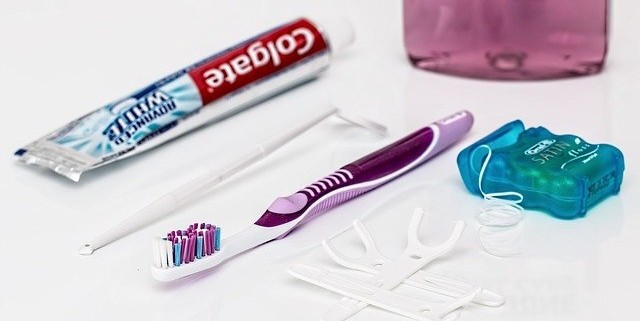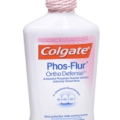Flossing Your Permanent Retainer (With Tips)
Last Updated on February 22, 2022 by Gio Greenard
Flossing is the most important part of oral hygiene. If you have braces or a retainer, it can be difficult to get all of those little nooks and crannies between your teeth. This can cause an easy target for plaque buildup which leads to oral health issues like tooth decay and gingivitis. In this post, you’ll see why you need to take extra care when flossing with a permanent retainer. Firstly, let’s get into what a permanent retainer is.
Contents
A Permanent Retainer
A permanent retainer is a piece of dental equipment installed in your mouth once you have finished with braces. While some people will have removable retainers installed others will see a permanent retainer installation. This is for those who have undergone significant tooth alteration during treatment.
A permanent retainer is a metal wire that will be placed behind your teeth and is invisible to the human eye. It goes in either the upper or lower jaw and can stay there for life if glued properly.
A major issue people might have when using this type of dental support system would be they are unable to floss properly and remove plaque particles or food remnants.
How Often Should I Floss?
Floss once a day. A daily habit of flossing will remove plaque from in-between each tooth, preventing any future damage to them or gums. It also helps to floss daily when there’s a retainer fitted because these retainers will trap food particles more often than normal.
Equipment Needed to Floss With a Permanent Retainer
Equipment is essential for successful flossing when you have a retainer fitted. You need two things.
- Flossing String
- Flossing Threader
Permanent retainers make it too difficult to use a normal flossing tool. Common ones can be used with one hand, with a retainer you need both hands.
Flossing String
Flossing string is a robust, reusable dental floss that you can work between your teeth to remove food particles and plaque. You’ll need two hands for it to be adequately used.
Flossing string should be held on each end of the string while they are being moved up or around gums comfortably with an emphasis on moving them slowly back into their original position after use. This will make sure no fibers get stuck within crevices where brushes cannot reach.
Flossing Threader
The flossing threader is a flexible plastic object with one end that curves to form an “L” shape. You will slide your teeth’ threads through this loop before using the other side as if it were needle and thread, poking them into any gaps between yours for optimal cleanliness.
Flossing With a Retainer – How-to Guide
Below, we focus on how to floss with the above equipment. Take each step one at a time.
Step 1.
We recommend using a mirror so you can see what you’re doing and get all the flossing equipment set up. And don’t forget to rinse away any plaque or food particles before leaving for work or school.
Step 2.
Place your flossing string through the loop on the floss threader and use a narrow end to maneuver it over top of the retainer. You’ll only need one pass with this tool before moving on to in-between movements.
Step 3.
Once you’ve got both ends of your floss threaded through the retainer and into each tooth, hold them in either hand. Work it back-and-forth between teeth as if combing hair or brushing clothes with a bristled brush to remove food particles from inside that can cause gum disease.
Step 4.
To move on to the next tooth, simply remove the floss from between two teeth and go in order. You don’t have to unthread it over a permanent retainer. Thread through one front tooth then another when needed.
More Permanent Retainer Care Options
Clean The Retainer
Clean the retainer regularly. Caring for a permanent retainer is important to maintain good oral health and avoid the risk of tooth decay. Brushing around your teeth’s new addition can be difficult, but it’s worth doing well in order to remove plaque and food particles from beneath or near them that may lead to bacteria build-up.
Keep up with Dental Visits
Dental visits are essential. Your teeth will be in good hands with a dentist’s help. A permanent retainer is an effective way to hold your pearly whites. But don’t forget about regular cleanings and check-ups from the professionals. They can catch early signs of decay that could cause major problems down the line.
Avoid Damaging Foods
You should avoid sticky foods like candy, chewing gum, and pastries if you have a permanent retainer because they can weaken the dental equipment that holds your teeth in place. While wearing one of these retainers is supposed to last for life, it could come loose or fall off if not cared for properly which will return to its original position.
Conclusion
The above is a rough guide on what to expect when wearing a retainer. You can get all the information from Dr. Panucci at Beach Braces.
They have the experience and dedication to give you and your child the best possible service. If you have any further questions you can contact us TODAY.

Dr Patti Panucci attended the University of Louisville School of Dentistry for four years, where she graduated with a DMD degree (May 2000) among the Top 10 in her class. Following that, she headed west to Los Angeles to complete her three-year residency at one of the top-ranked orthodontic programs in the country – the University of Southern California.
Along with her certificate in orthodontics, Dr. Panucci earned a master’s degree in craniofacial biology. During those three years, she fell in love with Southern California beach life and decided that this was where her future lay.








Leave a Reply
Want to join the discussion?Feel free to contribute!